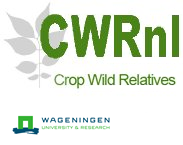About CWRnl
Methodology
Crop domain
CWRnl focusses on the economically most important agricultural and horticultural crops. For crops important at the global scale, the world primary crop list of the Food and Agriculture Organization of the United Nations (FAO) was used. This list was supplemented with crops of economic importance to the Netherlands based on data about crop production areas published by Statistics Netherlands (CBS) combined with data about economic revenues per hectare published by Wageningen Economic Research (LEI). The list was further supplemented with crops or taxa included in Annex 1 of the International Treaty on Plant Genetic Resources for Food and Agriculture (ITPGRFA) and crops occurring in the European Union database of registered plant varieties or the Dutch variety list of the Netherlands Inspection Service for Horticulture. Because of the focus on agricultural and horticultural crops, the inventory does not include species that may be relevant to other crop domains, such as forestry, ornamentals or medicinal crops.
CWR inventory
Based on the botanical genus name of a crop, the distribution atlas of the National Database Flora and Fauna (NDFF, accessed 14-10-2014) was used to examine which taxa of the genus occur in the Netherlands. Synonyms, non-accepted names and combinations of taxa, as indicated by the NDFF, were disregarded. Relevant information, including data on indigeneity, occurrence and Red List status were also obtained from the NDFF. In case of missing data, information was obtained from the Dutch Species Register, the website ‘Wild Plants in the Netherlands and Belgium’ and Heukels’ Flora of the Netherlands. A total number of 453 CWR were identified, of which 214 were described as native or introduced to the Netherlands before the year 1900. These 214 taxa, of which 53 with Red List status, were included in CWRnl. Since the inventory of 2014 several species have been added, while also the information about the species was updated in later years.
Crop relatedness
The ‘Harlan and de Wet Crop Wild Relative Inventory’ of the Global Crop Diversity Trust was used to collect information on crop relatedness. For a variety of crops, this information source presents to what extent wild species are crossable to a cultivated species. The species are thereby classified according to the so-called ‘gene pool’ concept, consisting of the primary (excellent crossability), secondary (intermediate crossability) and tertiary (difficult crossability) gene pool. For species without gene pool information, the crop relatedness on CWRnl is denoted by ‘same genus’. Because inter-fertility is not necessarily limited to species of the same genus, the Harlan and de Wet Crop Wild Relative Inventory was also used to identify CWR from other genera than that of the cultivated crop, which were added to our inventory.
Expected distribution under climate change
To be able in a conservation programme to anticipate on species’ reductions due to climate change, the expected distribution of CWR in the Netherlands and Europe as a whole was investigated. Niche modelling, also known as species distribution modelling, was used for this purpose. Through the use of computer models associations are examined between the occurrence of a species at certain collecting site and the environmental parameters at the geographic location, such as soil type and climatic conditions as temperature and precipitation. Identified correlations for a species are then used to predict the suitability of locations across a larger area. Subsequently, predictions are made about the future suitability of geographic locations based on climate change scenarios, such as expected changes in temperature and precipitation. Comparison of the predictions for current and future suitability provides expectations on future changes in species distribution. The distribution maps that are presented on CWRnl show the expected changes for the year 2070 according to an optimistic and to a pessimistic climate change scenario. These two scenarios are based on a different course of the emission of greenhouse gasses in the next decades. The presented distribution maps are entirely based on the expected suitability of geographic locations as a result of climatic conditions. Thus, other factors that may influence species occurrence, such as dispersal ability, are not taken into account. It should also be noted that predictions depend on the quality of the sampling, which may cause the absence of a species in part of the predicted distribution area (e.g. eastern Europe) in case of lack of well-documented collecting sites from that area.
Background information
- Centre for Genetic Resources, the Netherlands (CGN)
- Crop Wild Relatives Project (Global Crop Diversity Trust)
- Distribution atlas National Database Flora and Fauna (NDFF)
- Dutch Species Register
- EU database of registered plant varieties
- Food and Agriculture Organisation (FAO)
- Harlan and de Wet Crop Wild Relative Inventory
- International Treaty on Plant Genetic Resources for Food and Agriculture (ITPGRFA)
- National Variety Register
- Statistics Netherlands (CBS)
- Wageningen Economic Research (LEI)
- Wild Plants in the Netherlands and Belgium
Acknowledgements
CWRnl is an initiative of the Centre for Genetic Resources, the Netherlands (CGN) financed by the Dutch Ministry of Agriculture, Nature and Food Quality.

Contacts
- Dr. R. van Treuren
Telephone +31 (0)317 480916
Email Robbert.vanTreuren@wur.nl
- Dr. R. Lievers
Telephone +31 (0)317 487748
Email Rik.Lievers@wur.nl
- Dr. Ir. TJL van Hintum
Telephone +31 (0)317 480913
Email Theo.vanHintum@wur.nl
